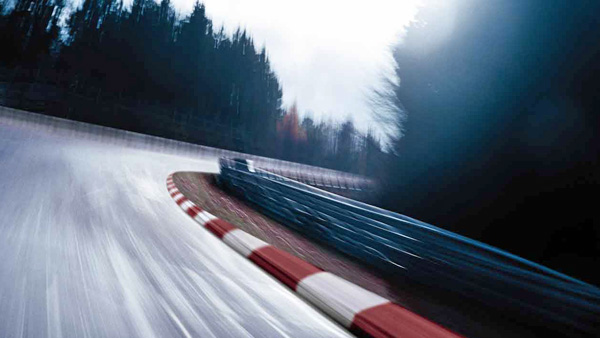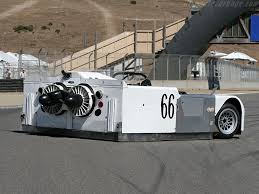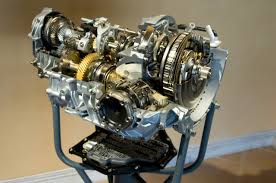|
“Ring-Fazination” is an exhibition stationed next to the “GP’ or “new” circuit on the southern end of Nurburgring. Kids and parents alike enjoy games and entertainment in a virtual surrounding. Just a “click” north within the bounds of the facility lie the ultimate amusements..a true parallel. hence my synonym of the Nordschleife.
Journeyman drivers know the feeling. You arrive at a new track and find yourself wrapped in the unmistakable aura of fear. Not for having an “incident”, heaven forbid. Recognition of course difficulty, coupled to peer pressure and loss of youth, an inevitable conflict in a driver of age and wisdom which he must address prior to the drivers meeting. English Channel crossings can be macabre at the dawn of dank winters end; indeed the powerful sea sprayed salted air under my feet as I stood at the bow of an unfolding French dawn. The vast concreted port of Calais lay before my feet. Loudspeakers tolled as livery and tourists padded their way along the transports decks, and I stole time to unwrap my mind’s thinly veiled trance replete with pictures of turns arriving way too fast for me. Monocratic in tone, the systematic notice echoed our arrival throughout the quarterdeck of this wind swept Channel ferry, becoming more momentous as the enormous gangplank hydraulics moaned in the background. Such cumbersome weight giving way to the marmalade skies of a French embarkation zone. A ticking within me began. Randy Sesson, our clubman in London, held his Range Rover readying at idle as I proceeded to engage the mandated English lock mechanism of his 993 modified Twin Turbo. With Europeans gripped in fear, the containment procedure of a much dreaded Foot and Mouth disease mandated my crossing a wetted trough upon arrival in territorial France. Subjective delousing complete, we made serious tracks due east along the French coast. Preponderancy occupied my drive with the subsequent morning driver meeting creeping in and around any thoughts of enjoying this continental traverse. Crossing the boarder into Belgium at speeds averaging 180KPH with nary an official stamp nor gendarme in sight, our efforts led us south then east again. Morning mist burned away hours before as the midday sunlight gave salute to our passing by Spa-Francochamps, a world class race course in which I had my first professional drive. Ahh! Spa and the Ring, duets of an earlier passage of rite, a validaton of youthful exuberance, late braking, and early apexes encapsulated with the hubris of life without end, one big party. Less than two hours later, my lips quenched with the hospitality of a good German beer, we relaxed to plan our driving stints at the most formidable racing venue in the World, the Nordschlief, The Nurburgring! Enjoying a local cuisine consisting of wild boar and venison, an old friend joined us. His 600 Kilometer excursion, made very briskly by the 12 cylinders of his Mercedes, helped in promoting our discussing the purchase of a GT3RS and logistics associated within this process. Hotel Rieder, pictorially typical to this region, has a guest book in which documents the great motorsports figures who, for more than half a century, awoke to the visual effect that accommodate Eiffel mountain living, in and around the Nordschleif. Their signatures remain a reaffirmation of how this region has been so untouched from the outside world, in the decades since my first stay. Ensconced by this sleepy hamlet a mere 3 kilometers from my temple of the tarmac God, our morning window opened to a picture of endless pastures and mountains beckoning the driver within us all. Attention is carefully paid at a driver meeting, for the Nordschleife section of Nurburgring. Along with the usual safety discussion comes something unique to this venue, CPR and a host of other ambulatory principles. You see, when you drive 170 turns, drivers must look out for one another. If an accident occurs, one must pull over and minister to the helpless in the wreck, mandated by the shear magnitude of the arena we play within. Several minutes, or more, may pass before medical treatment professionals arrive at the crash site. Novice drivers drew in the flavor of this experience with gaunt looks at each other. Unfortunately, these ambulatory methods would be needed throughout the competition. A comprehensive skill of course recognition and concentration throughout your driving stint was underestimated by the too fast or foolish. Taught by several veteran regional drivers, my earlier experiences with this track and its 300 meter elevation change disciplined the first several laps. “Mauk”, my teacher had a German affectation with my name, “Mauk, ve moost drife dees truck ass ve drife de roads arooond dit.” Vernacular aside, his meaning was that negotiating these many turns would have to be made as if you were driving a country road-at racing speeds. He also taught me to break down the track into the well-defined sections, mandated on the track map. Most importantly, he stressed the mind and how it would tire of the intense concentration before my young body would succumb with fatigue. Similarities with Bridgehampton could suffice for any of you who became familiar with blind turn recognition. Blind turn description does little justice to the actual awakening one receives at 220 KPH, negotiating a rise then dropping into a sharp bend in the forests of Adenauer with nary the thought of preparing a set of pedal and wheel movements that went to the left, no, right, no left-BAM, your dead! Better keep your wits about you! Weather is very much an issue of attention within the confines of this mountain region and at 20 Kilometers in length, “Jurassic Ring” in April was mystifying. Intense rain greets a fast car, very fast indeed; yet three “clicks” further along and the sun warms the spectators aloft in the high sitting perches. Well positioned for best views of short sections of road, festooned with signs greeting their favorite drivers, and some not so popular. I try to choose a really scary part of the “ring fazination”-as some call it, and I can’t. Maybe it has to do with the volumes of puzzled parts that scare the shit out of me. Being fast there is remembering every section, intimately! Co-driver Randy benefited by my prior experience, I benefited by a humble approach to certain sections. The first third and last third of this Black forest cake was within my grasp by the third lap, as I re-familiarized myself with the old landmarks taught to me so long ago. It was after Adenauer Forest on our way down to the lowest sections and working back up through Bergwerk that kept me from a confidence level I adopted when younger. Kesselchem made me look good as my right foot has a comfortable plant on the accelerator and at the 120 degree right turn, before the Karrousel there was confidence in 4 wheel drifting. Viewing several wrecks there, I thought it interesting that the Karrousel was and is very easy for me to drop into and pop out carrying good speed up Hohe Acht, setting up my ensuing drift along Wipperman. Schwalbenschwanz is important as are all turns coming onto any fast section should be. Upon clearing a minor incident, we move onto the fastest part of “Jurassic Ring”, a killer straight that seems to go on forever. Quickly shifting up to 6th, one eye jogs to the gauges and looks for 6200RPM, the complementary eyeball is watching the cars we’re passing. Seeing 300KPH for what seems like forever could be terminated if one does not respect the bridge and its kink to the left; a hint of lift on gas pedal and minor wheel correction and SLAM, the gas pedal is punished again, albeit for a short stint arriving at Hohenrain. We logged over 70 laps and my best time was 8:04. Randy’s level of skill grew to a point where I felt he was most comfortable. The first day was driven with the GP circuit included, very cool, sadly boring if driven exclusively. Ten hours of pounding rain dogged our ride back to Calais, then onto London’s Hyde Park, my flat, my respite. There is no substitute, bring on the “Fazination”! It does separate and disintegrate the men from the boys!
0 Comments
Porsche-Doppelkupplungsgetriebe has proven to be the greatest leap in overall performance for the production series Porsche since the advent of the turbocharger. Lightening fast gearshifts and uncompromising reliability combined with two true separate driving fashions result in the most enjoyable and practical Porsche driving experience to date. The most common question from our members is unquestionably “How does it work?” Let’s begin with the first examples of PDK “type” transmission, campaigned by the Chaparrel Company in conjunction with GM in the 1960’s during the CanAm era. (note: there have been numerous claims to design of the dual clutch transmission, however for the purposes of this article we will concentrate on the one that actually worked fairly reliably on a high horsepower documented racecar with the same principles of today’s PDK.) The 2J’s rudimentary transmission was the first notable attempt to use this technology in a racing car. It could withstand the horsepower that was being delivered, (though not always reliably) and worked in conjunction fairly well with the parameters set by the engineering in this oddly designed prototype racecar. In years to come Porsche would build upon the ideas of GM and Pete Weismann’s Williams F1 design from the 1993 model year, introducing this technology into the 956 and later 962, and finally into the production 2009 cars. Not withstanding Peugeot and Renault’s versions, the PDK we refer to today and will concentrate on in this article is the 7DT-45 or CG1.00. Simply stated a PDK transmission always has two gears engaged. The transmission’s computer effectively turns on one wet clutch while turning the other off via solenoid. This was not the case with the 956/962, which from a standstill need human actuation of a clutch. The PDK case has two shafts with gears 1.3.5.7.R on one and 2.4.6. on the other, we now have constant power that gives the driver the ability to shift within 200 milliseconds. To answer the question that is likely burning in your mind right now, yes, this will be expensive to repair should there be a failure. Let me note that the PDK has proven to be one of the most reliable transmissions Porsche has ever developed. At high RPM, in the tightest of corners, on the most demanding road circuits, the shift can be achieved without virtually any disturbance to balance thanks to sensors that determine if the shift is possible on a corner and/or based on overall engine RPM and other factors. Gone now are the days of throttle blipping as this is now done electronically on both the 7 speed manual and PDK transmission, as well as overrev limitation due to gear selection mistakes. I know there are some of you using the tiptronic type transmission via the 964/996/997.1 saying how different can it be? It is not even in the same ballpark. Granted, PDK paddle shifting and auto mode takes some of the sport out of it, but that is also what we said when ABS came out. Beyond these performance enhancements, a much more profound and exhilarating gearshift sound accompanies the already high-pitched purr of the 3.8 DFI engine found in the acclaimed GT3 model. Over the course of the past 7 years, software updates and design changes have made the PDK experience even more performance oriented with various mapping programs built in and a redesign of the PDK transmission itself most notably in the Panamera models. Whether you’re using the paddle shifter (after uproar over the gen. 1 buttons located on the steering wheel), shifter or automatic mode, the overall driving experience is second to none. Whether one should purchase a 7-speed manual or a PDK is ultimately up to personal taste and usage. I myself would be unlikely to ever purchase a Porsche without PDK again, and I doubt that was the feeling during the Sportomatic and Tiptronic era of any Porsche driver. But there are purists out there that love the nostalgia of the 7 speed which I personally find rather lethargic in nature compared to the 6 speeds of prior models. Either way, the 991 has, does and always will provide the utmost driver interaction. As a note for our members: if you experience poor shifting, noise, leaks, or any abnormal driving condition with your PDK transmission, your technician can recalibrate various systems to counteract most of these conditions and therefore restore your driving experience to what it should be: pure bliss. |
Team FormulaInformation, news and insights from the Formula Motorsports team. Archives
April 2024
|
|
Copyright 2024 - Formula Motorsports, Inc.
Porsche is a licensed trademark of Porsche, Inc. Formula Motorsports is not affiliated with Porsche, Inc. or any of its subsidiaries. All videos and pictures are for entertainment purposes only and are being shared with the Porsche enthusiast for entertainment.
|
Formula Motorsports
|





 RSS Feed
RSS Feed